
Six months ago I bought the Z5 with the FTZ adapter to get a feel for this camera and the Z system. In the following I will share my impressions and experiences. Please note that I take pictures but do not shoot videos. I shoot landscape, nature and wildlife. I own many F-mount lenses, but so far no Z lenses. The FTZ adapter is almost always mounted - the camera acts as an F-mount body for me so far.
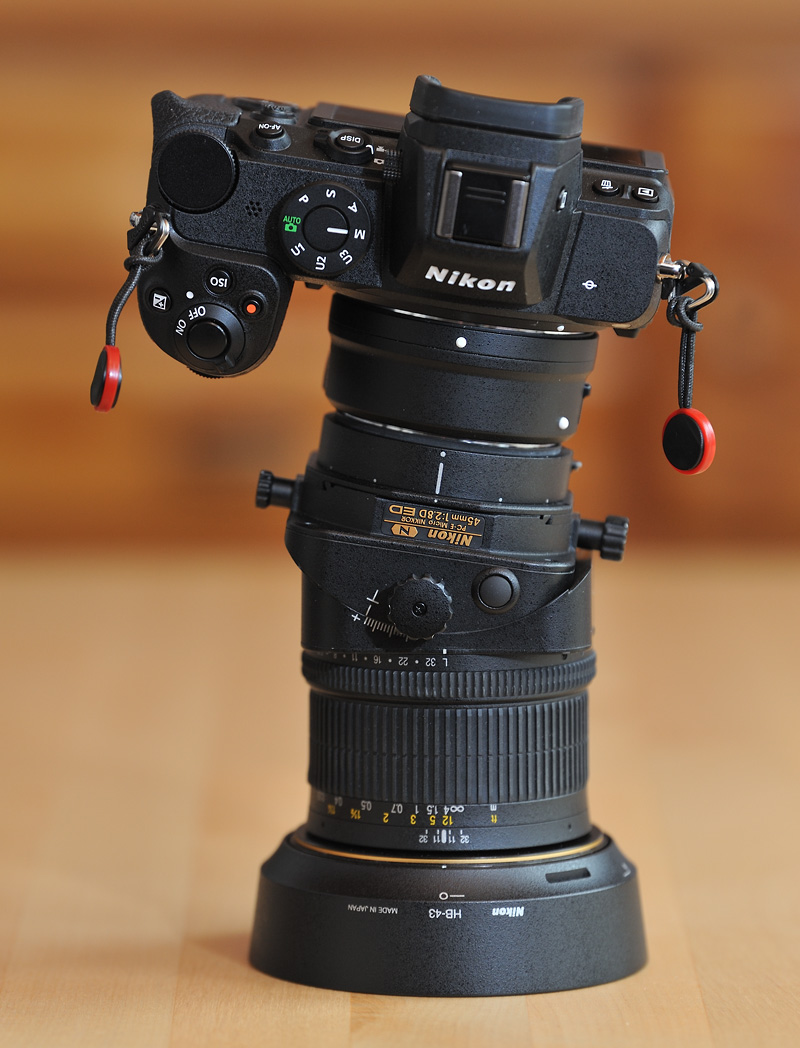
|
|
The Z5 is a great companion for my T&S Lenses! |
Off and on you can read that Z equipment is lighter and smaller than F equipment. Compare them for yourself:

|
|
Z5 plus FTZ including card and battery: 830g. Df including card and battery: 780g. To be comparable, however, you have to carry one or two additional batteries for the Z5. An EN-EL15c battery weighs 80g. For the sake of completeness, the FTZ adapter weighs 130g. |
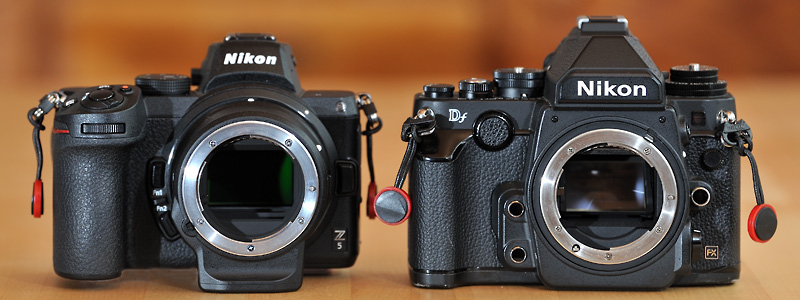
|
|
|
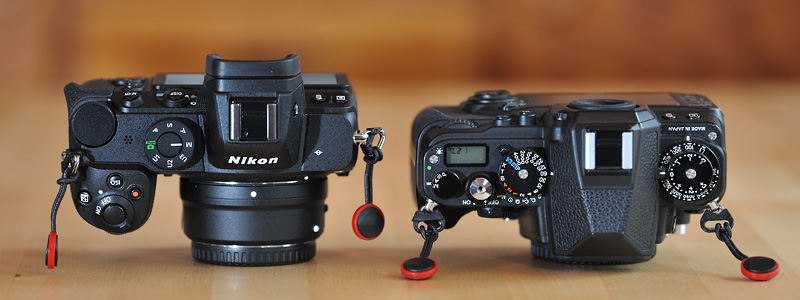
|
|
|
With the first SLRs, the photographer had to control the aperture manually: open to focus and then close before releasing the shutter. Then came the automatic aperture: the camera always keeps the aperture open for easy focussing and a bright viewfinder image. When the shutter button is pressed, the camera first closes the aperture and then opens the shutter.
All Nikon F-mount cameras have such an automatic aperture (exotic special models, like the F2H, prove the rule).
Nikon Z-mount cameras work differently:
If the selected aperture value is less than or equal to F5.6, the camera sets the lens to exactly the selected aperture - what you see is what you get! When the shutter button is pressed, the camera does not have to do anything with the aperture.
If the aperture value is greater than F5.6, you look through the viewfinder or at the display at F5.6. Similar to SLRs, the aperture is closed to the preset value when the shutter is released. Many of the custom controls can be configured as a "preview" button, which includes stopping down to the selected aperture value.
The speed of the AF system is quite good. It is also very precise and in this respect surpasses the DSLRs I know.
A big advantage is the coverage of the entire image area with AF sensors!
Unfortunately, the system also has a drawback: the AF sensors are quite large! This makes precise focussing difficult in some situations. The share of the area of an AF sensor in relation to the total image area is about 3.7 per mil with the Z5 and single-point AF (and the Z6 as well). For comparison: with the Df it is about 1.2 per mil. Yes, the Z5 also offers the smaller pinpoint AF. But focussing is slower with this smaller AF-Sensor and it is not available with continuous AF.
When it comes to manual focussing, a good mirrorless system has significant advantages! For me, it was the main reason to try the Z5.
The focus peaking is a great help to identify the focal plane within the image. This is especially helpful when tilting.
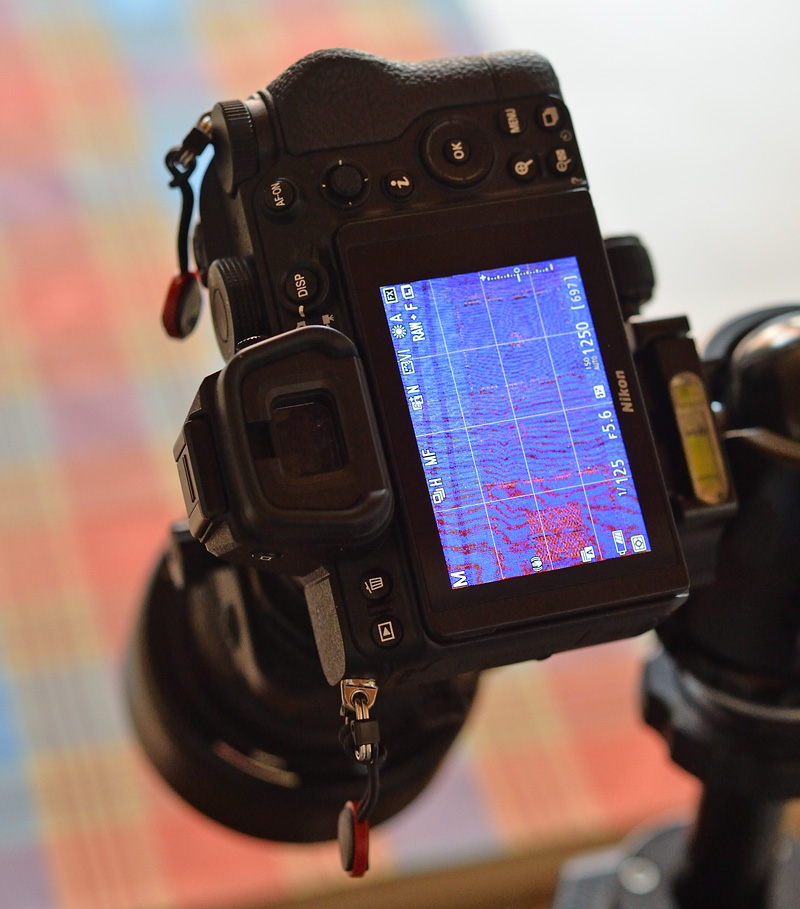
|
|
The Z5 is set to peaking level 1 and highlight colour blue. Photographing the tablecloth with my PC-E 85mm f/2.8, fully tilted. The problem with tilt is to find the plane of focus.
Focus peaking is a great help for that - blue all over means you have found it! Here I focussed at F5.6 but shot at F2.8. The result is sharp all over, see the image below. That shows that it works precisely. |
|
|
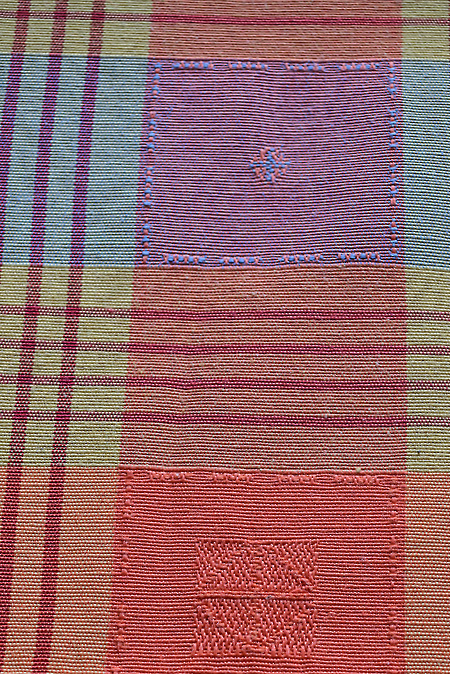
|
I was initially suspicious of the accuracy of this tool, as the camera does not hold the aperture open. I did some tests with my PC-E Nikkor 85mm f/2.8. I focused at F5.6 and then shot at F2.8. Then I focused and photographed the same subject at F2.8. The results are hardly distinguishable!
The second excellent tool for manual focussing is the electronic viewfinder magnifier (Nikon calls it "zoom"), which you can assign to a custom control. For magnification, you can set 50%, 100% or 200%. If focus peaking is activated, it is also active in combination with the viewfinder magnifier. That's fine!
I had serious difficulties focussing the Nikkor 500mm f/4 P on my DSLRs, see my article about that. On the Z5 I can focus it without any problems!
Nevertheless, I miss something: Nikon, how about a "stop-up" button that opens the aperture completely for very precise focussing? A configurable combination with the viewfinder magnifier would also be conceivable. I suppose such functionality would only be a software update!
Some photographers are looking for a way to change the focussing screen of their DSLR. There are suppliers on the Internet who offer specially cut screens that you can mount into your DSLR. But such a mounting is not everyone's cup of tea... With a mirrorless camera, mounting a focussing screen is not a problem because that would be just a software app. @Nikon: I would like to see an 'H' screen as a configurable alternative for focus peaking.
The EVF on the Z5 is very good. If you've been looking through optical viewfinders for almost 50 years, as I have, you'll be impressed by the clarity! But you'll also be irritated by the viewfinder's required brightness changes, which the camera does automatically. With an optical viewfinder, it is your eye that makes this regulation.
A problem with the Z5 EVF is movement! Often, the finder image appears a bit soft and also a bit juddery, when you move the camera for e.g. tracking an animal. Perhaps this effect is less pronounced on the more expensive Z models. Things get really bad when you try to take continuous shots of fast-moving objects with the Z5, e.g. birds in flight. With 4.5 frames per second, the Z5 is not the fastest. But the biggest problem, however, are the long blackouts in the viewfinder after each picture. A kingdom for a DSLR! Even the rather slow Df is in a different league here! The Z6(II) is faster than the Z5 and the sensor can be read out faster. But I guess the problem will also be there with the Z6, although probably less pronounced. The Z5 is more a camera for static subjects!
For some years now, the dioptre correction range of -3 to +1 that is common with Nikon DSLRs has no longer been sufficient for me. I need about +1.5 and therefore have to use eyepiece correction lenses. Not so with the Z cameras! Here the correction range is larger: -4 to +2. Thank you, Nikon!
Compatibility has always played a major role at Nikon. But with the Z system, this issue is more of a mixed bag.
The camera uses batteries of the widespread EN-EL15 family and I can use my SB-700 flashes and my WR-T10/WR-R10 radio remote control without any problems. That's fine.
The current Z cameras in combination with the FTZ adapter have two major limitations in terms of F-mount compatibility:
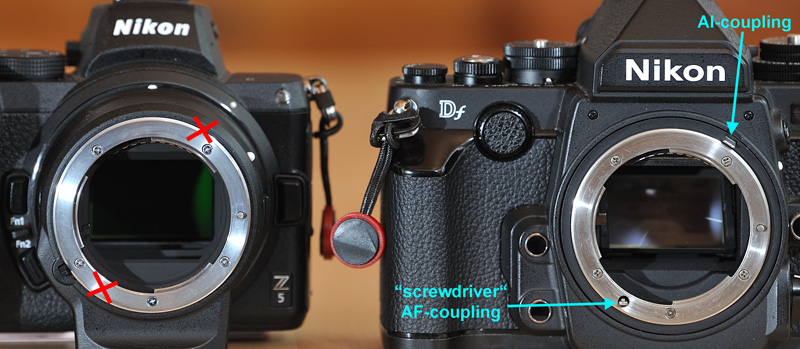
|
|
Missing F-Mount compatibility! Z5 plus FTZ vs. Df. |
Of course you can use your "screwdriver" AF lenses with manual focussing on your Z camera. But this will only be an acceptable solution in some cases. Maybe we will get a better solution in connection with the upcoming professional Z9.
As known from the DSLRs, non-CPU lenses can be declared to the Z camera via data input. You should do this for enabling the internal vibration reduction of the camera!
However, the aperture control described above does not work. A non-CPU lens always works stopped down to the selected aperture, even with apertures greater than F5.6. No matter if Nikon wanted it: with older non-CPU lenses, the camera cannot set the aperture to F5.6!
With non-CPU lenses, no aperture is shown in the viewfinder or on the display. This information is also missing in the EXIF data. The reason for this is that Nikon did not provide the FTZ adapter with AI-coupling.
In summary: many non-CPU lenses can be attached to the FTZ adapter, but they are not supported beyond that. An inexpensive third-party adapter may be the better solution for non-CPU F-mount lenses, because there will be fewer problems with non-AI lenses.
Finally, some good news:
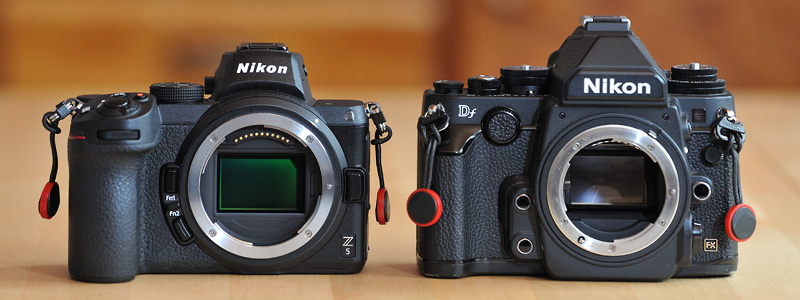
|
|
Compared to the F-Mount the Z-Mount is huge. Thanks to the small flange focal distance, almost any lens can be used like a non-CPU F-mount lens on a Z camera. The range of adapters from third party manufacturers is huge! |
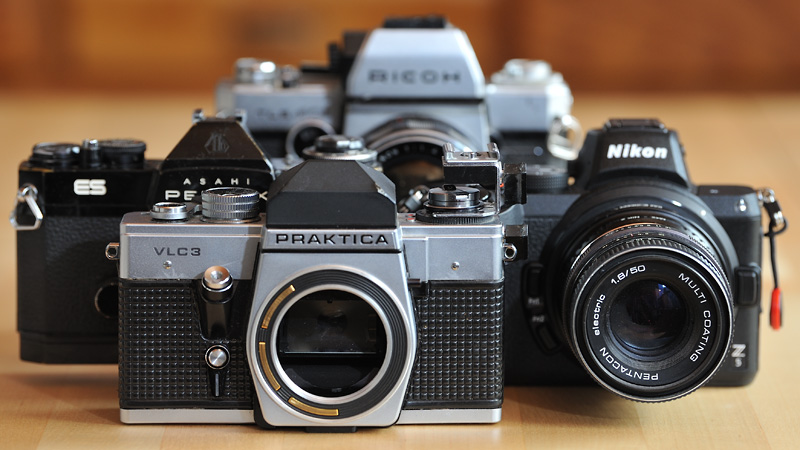
|
|
Get your M42 gear out! I bought a Z to M42 adapter for lttle money. It allows me to use the lenses of my Praktica VLC3, Asahi Pentax ES and Ricoh TLS401 on my Z5. Such adapted lenses behave just like non-CPU F-Mount lenses. |
I made a few series of shots with my PC-E 85mm at 1/15 second. With activated VR most images were sharp, without VR most were blurry. Subsequently I also captured a couple of images with my good old AF-S Nikkor 300mm f/4 D at 1/60 second and with the M42 Pentacon 50mm f/1.8 at 1/8 second. The results are the same: the integrated VR of the Z5 is very effective! Thank you, Nikon!
The electronic shutter is a great thing, especially when photographing shy animals. On the other hand, there are some restrictions, so I shoot with the mechanical shutter by default. However, I would like to be able to activate the electronic shutter via a custom control!
The ergonomics of the camera are very good and the operation does not pose any riddles. Overall, the photographer can adapt the Z5 very well to his needs. I use my cameras with backbutton focus, and the Z5 allows that too. I don't miss a display on the top.
The Z5 is a great camera for still subjects. The image quality and high iso performance are excellent. 4.5 fps is not particularly fast, but the buffer size is good. With manual focus, the camera really shines! The integrated vibration reduction enhances older lenses considerably. It is a pity that Nikon does not provide more support for such older lenses on the FTZ adapter. The build quality of the Z5 is quite good.
As far as the general suitability of the Z system for fast-moving subjects is concerned, I'm looking forward to the Z9 camera Nikon has announced for later this year.